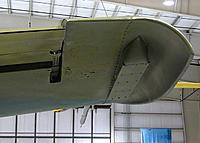The wingtip devices used in A-10 Warthogs are called drooped wingtips (also called Hoerner wingtips in some cases), which essentially increase the aspect ratio of the wing by forcing the vortices further out.
Source: zenithair.com
There are a few reasons for having this wingtip device:
The drooped wingtips act in a manner similar to the winglets and reduce the induced drag. As a result, the loiter capability of the aicraft, an important one for Close Air Support (CAS) aircraft, is improved. The A-X competition, that lead to the A-10 develpment, required the aircraft to have Two hour mission loiter time at max mission radius with 9,500 lbs payload
The drooped wingtip increases the local span loading near the wingtip, due to which the aileron response is improved, increasing the manuverability at low altitudes. The A-X competition required the aircraft to be Highly maneuverable below 1,000 ft
The drooped wingtips also improve the takeoff performance, an advantage as the aircraft is expected to be operated from short, forward fields. Infact, drooped wingtips are found in STOL kit of some aircraft, like DC-2 Beaver. One of the requiremens of the A-X competition was that the aircraft should have 4,000 ft takeoff distance at MTOW.
As can be seen, the drooped (down) wingtips wingtips serves these purposes.
There seems to be some confusion regarding the reason for these wingtip devices. One theory (@Peter Kämpf) is that they are there to protect the ailerons from ground contact. However, I think this is unlikely, given the ailerons, when extended, go well beyond the wingtips, as shown below:
Source: scienceforums.net
Dropped down wingtips do serve that purpose (sometimes) in gliders. However, there is no reason to believe that is the case here, considering the height above the ground and the aspect ratio. The drooped wingtips, on the other hand serve to hold the countermeasure system.
Source: rcgroups.net



